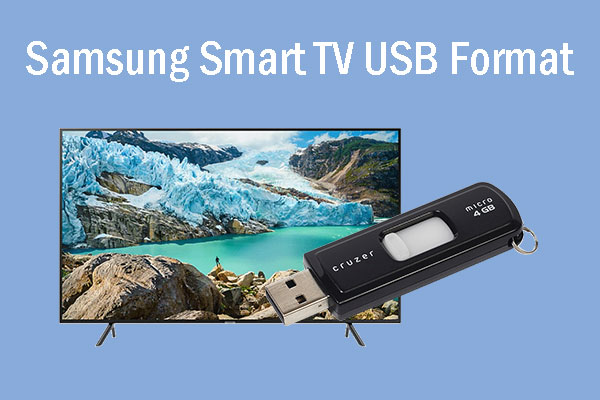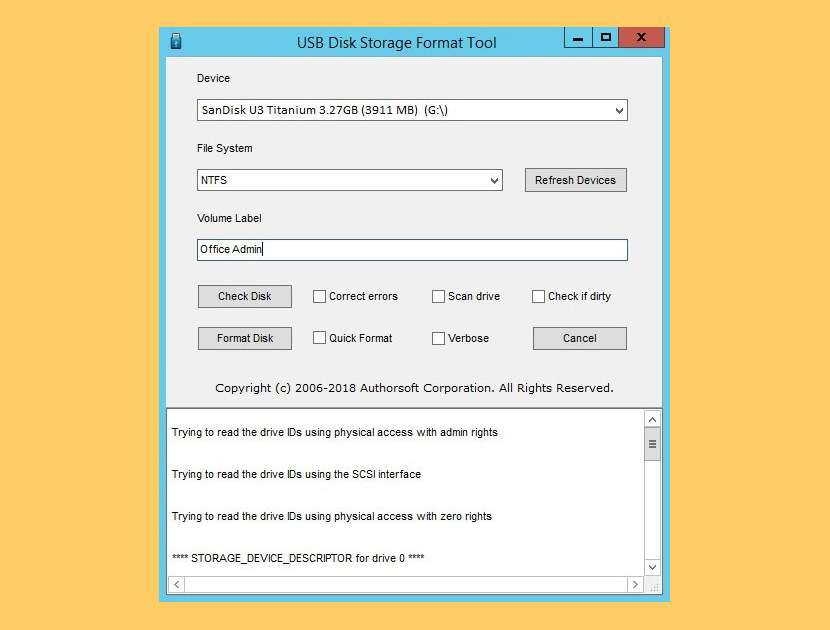

- How to reformat a usb drive to usde for storage full#
- How to reformat a usb drive to usde for storage mac#
- How to reformat a usb drive to usde for storage windows#
The formatting process will start once you click "OK". Make sure you want to erase all data on the disk before you click OK. (If you are not sure, just leave all the selections as default.)Ī pop-up will inform you that the format action will erase all the data in the flash memory. Select "FAT 32" under the File System and make sure Quick Format is not selected.

Open "My Computer" and right click the removable disk drive you have just inserted.Ī dialogue box named "Format Removable Disk" should appear. Normally your system should find it as a removable disk drive automatically. Plug your USB flash drive or memory card into the USB slot of your computer. You should only use exFAT if you work with devices that are running on the most up-to-date operating systems.If you want to format your USB flash drive or flash memory card, you can follow these steps:
How to reformat a usb drive to usde for storage full#
Otherwise, you will have to depend on additional software in order to use the full functionality of the USB stick.
How to reformat a usb drive to usde for storage mac#
But if the stick will also be used for copying data to a Mac computer, one of the two older FAT systems (ideally FAT32) is recommended.
How to reformat a usb drive to usde for storage windows#
If you’d like to format your USB drive and only work with Windows devices, the NTFS format is a suitable choice as you’ll not have to think about the size of the stick or the files you want to save. It is specially optimized for flash storage media and is generally unsuited for use as a file system for internal hard disks. It is also compatible with newer macOS (from 10.6.5) and Linux systems. On Windows, it has been supported since XP. exFAT ( Extensible File Allocation Table): exFAT is the modern Microsoft file system that matches NTFS in terms of storage capacity.However, the format is only partially supported – if at all – by many other systems as standard (for example, NTFS is read-only on macOS). NTFS permits any disk and file sizes (the theoretical limitations are unattainable in common computer usage). NTFS ( N ew Technology File System): NTFS is another file system developed by Microsoft it was introduced as an additional option at the beginning of the Windows NT series.FAT32 is also supported by other operating systems like macOS and Linux. FAT32 ( File Allocation Table – 32 bit): FAT32 is the successor to FAT16 and differs from its predecessor in particular due to its increased capacities: the maximum size for files amounts to four gigabytes and the disk size is up to 2 terabytes.In Windows editions since NT, FAT16 enables a data size of up to two gigabytes and a disk size of up to four gigabytes, which is why the format is also suitable for smaller sticks. When this occurs, the entire disk size in Disk Management might shrink, or the USB drive shows 0 media. For example, it has been formatted on Mac computer recently, but now reformatted back to Windows FAT32, then its capacity might get shrunk. One of the first versions was FAT16, which was released during the heyday of diskettes. The USB drive is formatted on the different computer frequently. FAT16 ( File Allocation Table – 16 bit): The FAT file system has been among Microsoft’s operating systems since 1977, and it is also supported by other systems like macOS or Linux.

Microsoft Windows offers the following four formats as standard: The key criteria to bear in mind when choosing the system include the storage volume of the stick, the size of the files to be saved, as well as the operating systems that are to be connected with the stick. Before you start formatting your USB drive, you should first consider which file system you actually want on the external storage medium.


 0 kommentar(er)
0 kommentar(er)
